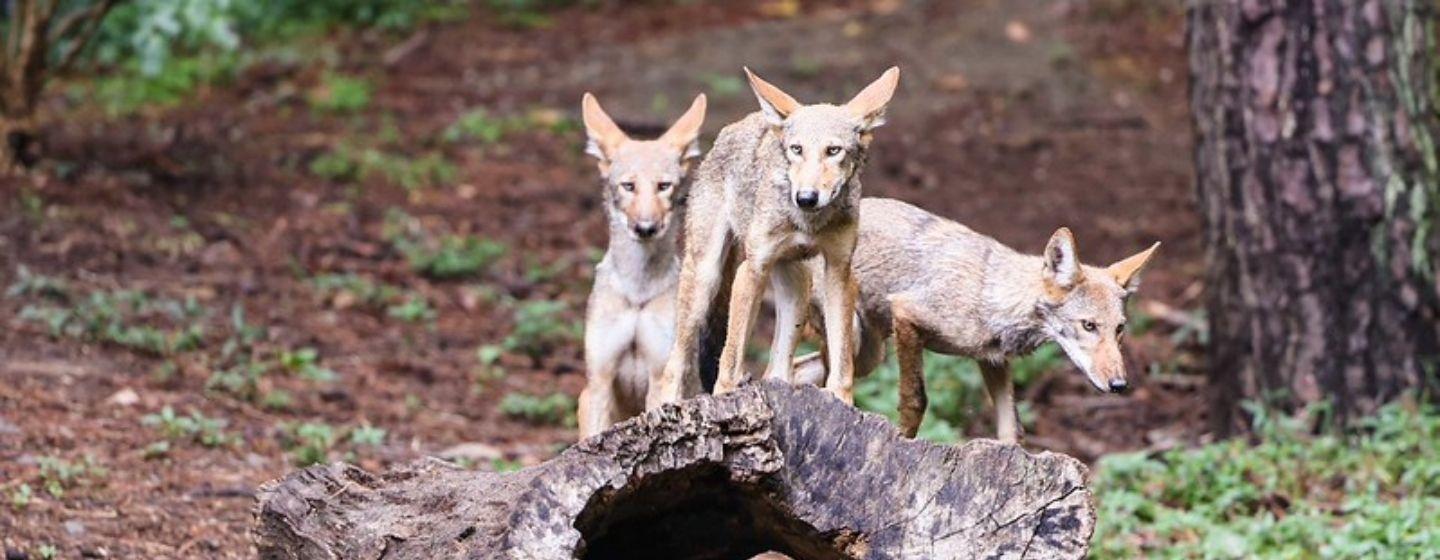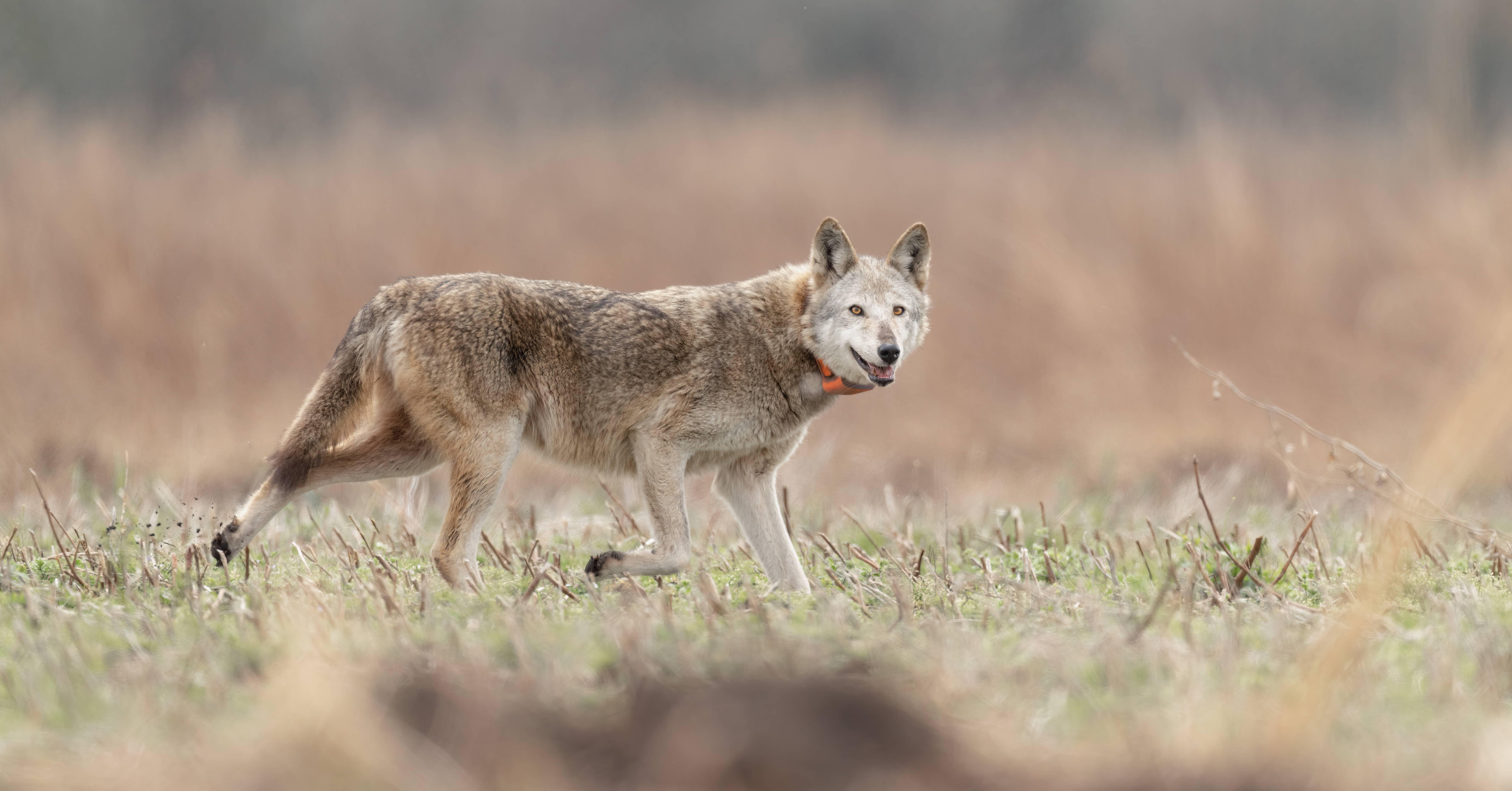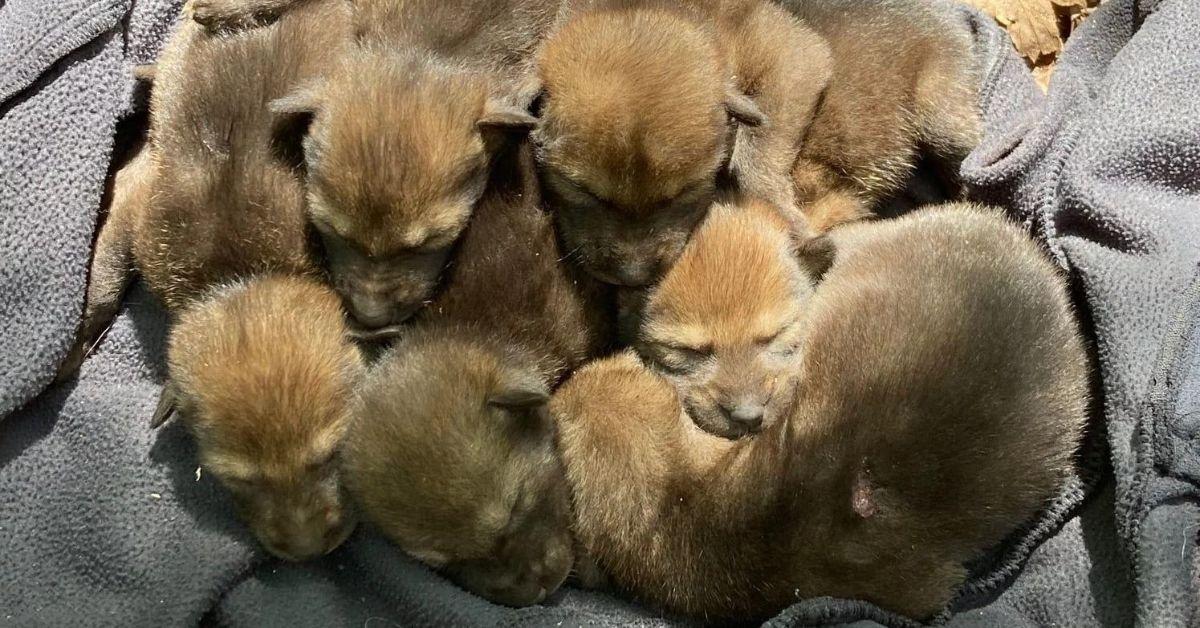Developments in Effort to Restore Red Wolves to NC


Human families need to move sometimes to accommodate growing families and find new opportunities.
It turns out the same is true for critically endangered red wolves.
The Museum of Life and Science’s family of seven red wolves is moving from Durham to the Wolf Conservation Center in South Salem, New York. Biologists believe relocating the family to the new facility offers the best chance for the first-time parents to breed again.
“This is the best plan for our current family of Red Wolves,” said Sherry Samuels, the museum’s senior director of animal care, in a press release. “While it is bittersweet to see them move on, there is excitement that the family will remain together. The habitat at Wolf Conservation Center is three times their current environment, and this will allow the family to continue to grow next year.”
After a successful breeding season in 2024, mom Oak and dad Adeyha produced five pups. The museum opened a naming contest for the pups to the public. The winning names, which pay homage to their parents and NC native trees, are Juniper, Cedar, Sassafras, Maple and Tupelo.
Because the family is doing well and Oak and Adeyha are still a genetically valuable pair, officials with the Association of Zoos and Aquariums, which partners with federal and state agencies to run the Red Wolf SAFE (Saving Animals from Extinction) Program, determined the change of scenery would provide the best opportunity for the pair to breed again.
In exchange, the museum will welcome a new mated pair of red wolves, Oka and Martha.
Samuels also noted the importance of this move: “This relocation is a key part of our efforts to help ensure the survival of this critically endangered species. We’re excited to continue our conservation work with Oka and Martha.”
Meanwhile, the Red Wolf Center in Columbia, North Carolina, is gaining its first-ever breeding pair of red wolves. The arrival is a collaboration between the North Carolina Wildlife Federation, the U.S. Fish and Wildlife Service and the Red Wolf SAFE Program. The program’s plan aims to maintain genetic diversity among red wolves and support their recovery in eastern NC.
The male red wolf was born in 2022 and comes to the center from the Endangered Wolf Center in Eureka, Missouri. The female red wolf, born in 2019, is from Carolina Tiger Rescue in Pittsboro, NC. Together, they have a chance to be the center’s first breeding pair in the exhibit pen.
“This is a monumental moment for the Red Wolf Center and for the future of Red Wolves,” said Tim Gestwicki, CEO of North Carolina Wildlife Federation, on the organization’s website. “Bringing together this pair for the first time at the Center highlights the tireless efforts of everyone involved in Red Wolf recovery, from on-the-ground biologists to supporters who believe in the cause. We’re hopeful that this pair will lead to a new generation of Red Wolves, underscoring that recovery is a complex, collaborative effort.”
While neither of the wolves has produced a litter, officials with the recovery program are optimistic. The success rate for breeding wolves in human care is 38%–45%.
Want to check in on how the new couple is doing? The Red Wolf Center has a live camera feed so we can watch the wolves in real time.
Native to North America, red wolves are named for their characteristic reddish fur. They measure between gray wolves and coyotes in size and weigh between 44 and 85 pounds, depending on sex.
Red wolves were once common throughout the eastern United States. They faced extinction, however, in the late 1970s after intensive predator-control programs and a loss of habitat decimated their numbers. That led the wolves to be classified as “critically endangered” on the International Union for Conservation of Nature’s Red List.
Red wolves were one of the first species listed under the Endangered Species Act in 1973.
Some of the only red wolves found in the wild are in the Alligator River National Wildlife Refuge in eastern North Carolina. The wild population is estimated to number about 20. As of 2024, there are 257 red wolves in conservation centers under the Red Wolf SAFE Program.
Learn more about efforts to restore the red wolf population in North Carolina.

The only red wolves in the wild are found in Eastern North Carolina. Five facilities throughout the state are working to save the species.

New litters of wolf pups at the Alligator River National Wildlife Refuge and the NC Zoo add to impressive growth numbers.